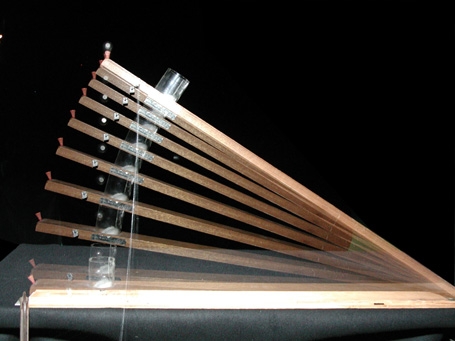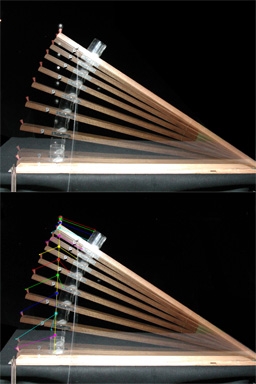What it shows:
Allow a board to rotate under the force of gravity and the free end will accelerate at a rate greater than g. Relation between angular acceleration and linear acceleration seems to give free-fall paradox.
How it works:
If a board, held in a vertical position with one end resting on the table, is allowed to topple over, every part of the board moves on a circular path. The center of percussion of the board is the point that has the acceleration of a free falling particle along the path that it follows (it's located 2/3 of the length of the board from the point of rotation); all points beyond the center of percussion descend with accelerations greater than they would have if they were particles moving freely on their respective paths. Consequently, the board reaches a certain position below which the vertical component of the acceleration of its end point exceeds the acceleration of gravity. For a uniform board, this is at such an angle that cos2θ is greater than 2/3, or θ is less than 35 degrees (see Comments below). The demonstration illustrates this fact and can be used to interpret the observed backward buckling of the top of a falling chimney, which is caused, in part, by inertial reactions.
The board is 1 meter long and rotates about a hinged end. A small plastic cup is attached 85 cm from the hinged end. A plastic golf tee is attached to the free end and holds a golf ball or large ball bearing when the board is propped up at a 35 deg angle by a vertical stick. When the vertical stick is suddenly yanked out, the board falls, and the ball falls into the plastic cup. The action is quick and startling.


Comments:
The angular acceleration of the falling board is given by
![]()
The acceleration of the free end of the board in the downward direction is
![]()
and